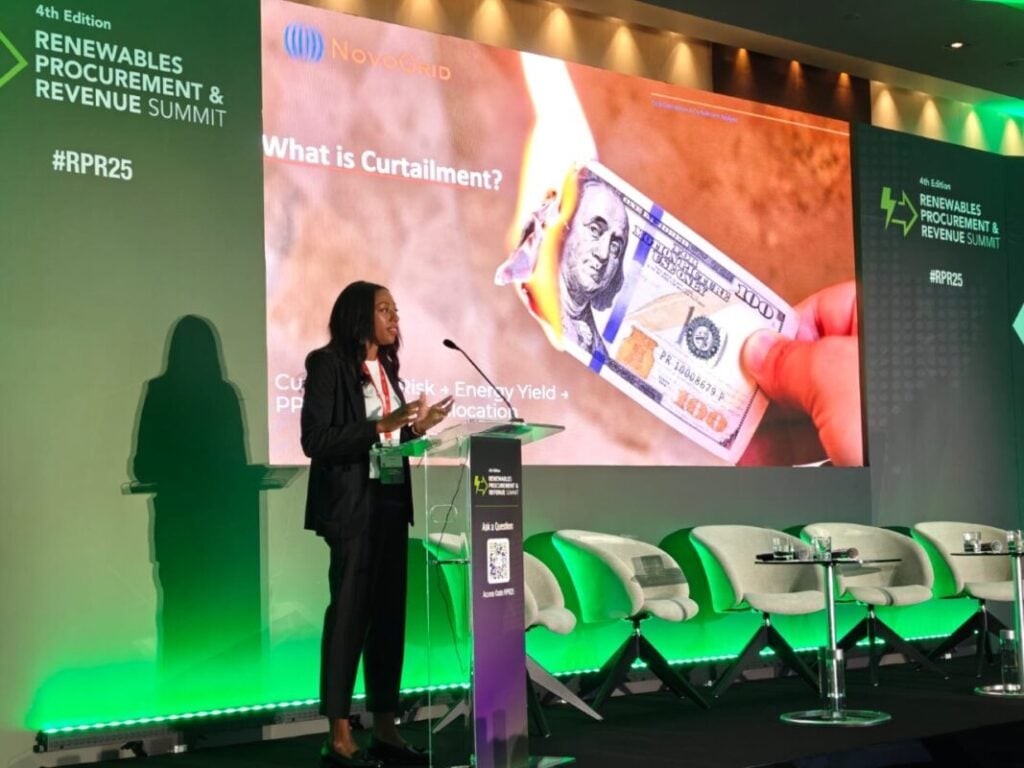
Despite being a crucial determinant of revenue, curtailment risk is often misunderstood or underestimated.
During a panel at Solar Media’s Renewables Procurement & Revenue Summit, held this week in London, Shamieka Lynch, account manager at grid consultancy Novogrid, described curtailment as fatal to renewable energy projects. She highlighted how very few developers account for it accurately, the session focused on the urgent need for better forecasting and contractual clarity.
“Curtailment can eat away at your energy yield – your revenue – on the sunniest day of the year. And if you haven’t accounted for it in your PPA (power purchase agreement), you take the hit,” she said. “For anyone buying, selling, or financing assets, if you’re not getting your curtailment estimates right, you’re burning money – and that’s not just a metaphor.”
Curtailment, in this context, refers to when the Distribution Network Operator (DNO) instructs a site to power down to avoid overloading the grid, not to be confused with voluntary economic shutoffs.
“You can have the sunniest day of the year, but if the network operator tells you to turn your solar site down, and you didn’t account for that in your Power Purchase Agreement (PPA), you take the hit,” Lynch explained. “And if you get this wrong, every forecast that follows will be wrong.”
Curtailment is becoming more common as renewable energy deployment races ahead of grid infrastructure upgrades. In the UK, queue position determines who gets curtailed first. The most recently connected generators are curtailed first – making ‘last in, first out’ a costly disadvantage. “The next ten years will see more of the same,” Lynch said, warning that grid reform plans could push some developers further down the queue or eject them entirely.
Why are curtailment projections so often inaccurate? Because traditional models rely on historical data and broad assumptions, missing the grid’s nuanced and dynamic behaviour. “It’s like moving one image in a Word document and everything falls apart,” she quipped. Adding even one new generator to the system can shift curtailment patterns in unpredictable ways.
Lynch emphasised that accurate forecasting of curtailment is possible and vital. Using power flow analysis to model expected curtailment across an asset’s lifetime, including during outages and under future demand conditions can provide generators, investors, and off-takers with concrete, location-specific forecasts to better inform PPA pricing and risk allocation.
“Understanding curtailment is not just technical due diligence – it’s business-critical,” Lynch concluded.

